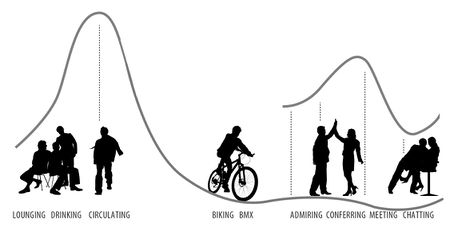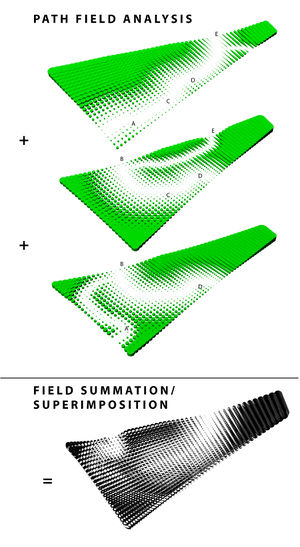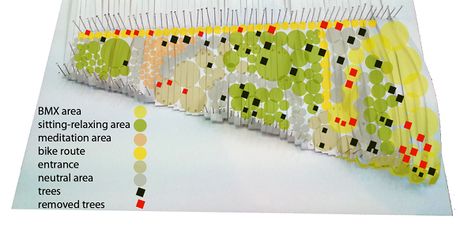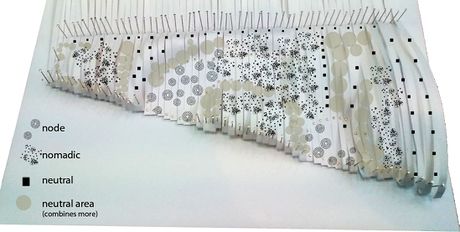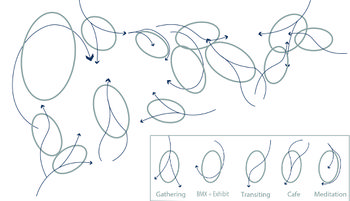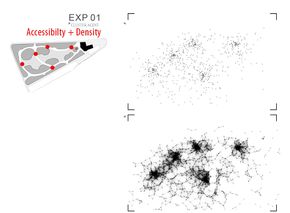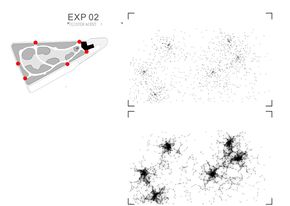project H:DESIGN SYNTHESIS
Contents |
DESIGN SYNTHESIS
A research will be carried out exploring the idea of modulating differentiated external forces like light, sound, wind into a space. The process of pattern making, through an exploration in geometry, will be of particular interest during the initial steps of the design process.
Exploration will begin with a series of physical experiments into simple sheets of paper. In further development to understand and rationalize the surface experiments into a built-able structural component. Through a parametric model the analysis of the surface geometry will be done and generated data will be used to carry out the structural maneuvers. For example, connecting two components by length would create an internal stress which would add to structural stability and control the amount of opening of each cell, orientation and global geometry.
The installation consists of different type of components that divide the spaces according to their program. Each one of the components will act as cells of these enclosures and will be parametrically designed to modulate site forces according to site-specific conditions.
SITE PATH CIRCULATION ANALYSIS
This field will provide us with representational particles that might be the building blocks of our structure. These representational particles might be further developed by analyzing their density to observe their transitional behavior or by linking the particles together to produce a series of parallel strands and thus construct a relationship between the generated pattern and topographic condition.
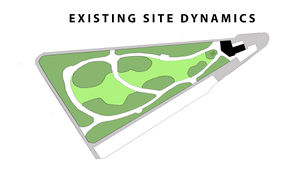
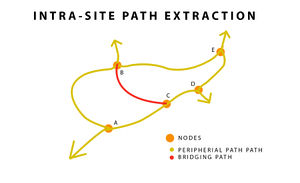
Here different possible paths through the existing site are considered as attractors and thus create a field around it. All these separate path fields are then taken and superimposed on one another to extract a differential spatial conditions depending on the varying degrees of concentration of usage and accessibility. This will help in the organization of various functions and zoning the site in the most logical way. The Circulation study is based on programmatic functions such as; Gathering Area, Café, Transit linkages, BMX, Meditation and Exhibit.
SPACE QUALITIES
Which is the appropriate position for each use/function?
Which use is placed high and which one lower?
Which use is visible and which one is hidden?
Which use can be indoor and which one outdoor? or semi-open?
Which part of the space is only for pedestrians, only for bikes-skateboards and where they can coexist?
Which functions are autonomous and which one can interact with the others?
PARTI DIAGRAMS
Circulation studies where then applied to the spatial condition which then shifts and rotate the spaces accordingly, thus giving rise to various parti diagrams. The information gathered from site analysis was used as feedback.
</div>
PROGRAMMATIC DISPERSION
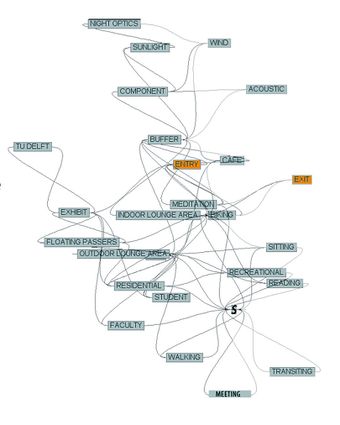 The diagram reviews the possible distribution of different functions according to the gradation of publicity and the
tendency either to activity or infrastructure part of the building’s programme. The diagram verifes
the difference
between the
circulation patterns of
diverse user groups.
The diagram reviews the possible distribution of different functions according to the gradation of publicity and the
tendency either to activity or infrastructure part of the building’s programme. The diagram verifes
the difference
between the
circulation patterns of
diverse user groups.
FORCE FIELD CONFIGURATION
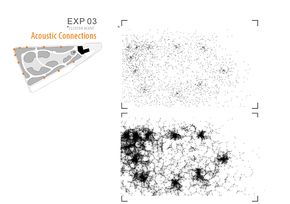
Based on parameter configuration setting, we are drawing different spheres representing amount of acoustic, density, etc. These can be seen as the attractor or repellent points within a force field for the particles.
